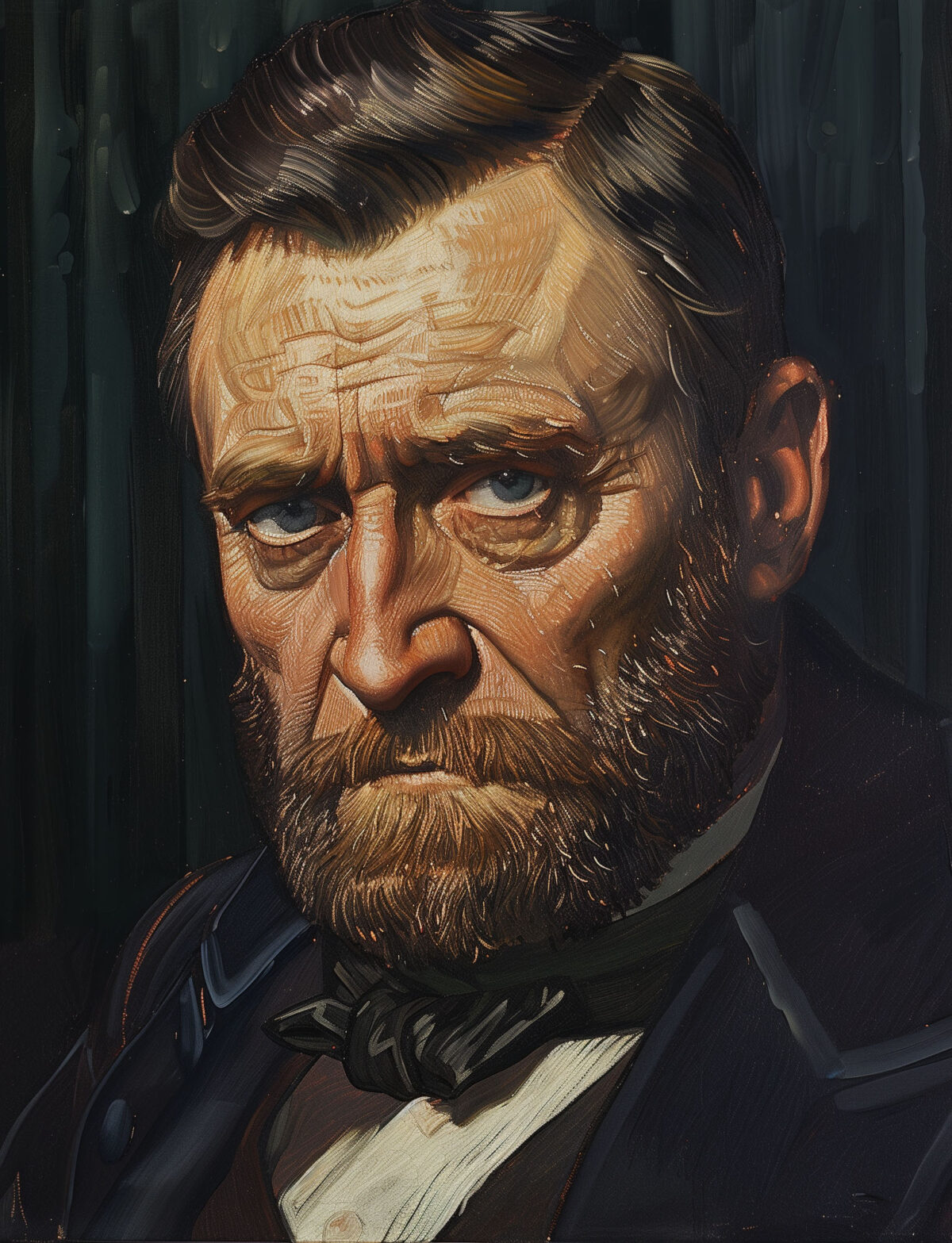Second only to Abraham Lincoln as a savior of the nation and even praised by many former Confederates for his demeanor at Appomattox, Grant became the first four-star general in U.S. history before winning two terms as president. A courageous effort to complete his memoir while battling terminal cancer 20 years after the war further enhanced his reputation.
More than a million spectators watched his funeral procession, which stretched for miles through the streets of New York City on August 8, 1885. Twelve years later the dedication of his tomb on Morningside Heights also drew a million people, among them President William McKinley. Then and now the largest tomb in North America, it remained New York City’s leading tourist site until the Great Depression. The national capital unveiled its memorial to Grant on April 27, 1922, the centenary of his birth. Exceeded in size by only two equestrian statues in the world, it took more than 20 years to complete and occupies perhaps the most desirable site in the city—at the foot of the Capitol facing down the Mall toward the Lincoln Memorial. By the time the statue was dedicated in Washington, however, shrill criticisms of Grant as a military butcher, a drunk and a president surrounded by corruption clouded his reputation.
Many former Confederates labored to diminish Grant’s reputation through the use of numbers and casualties. They insisted he had defeated Robert E. Lee only because of overwhelming advantages of men and materiel, casting him as a brutally effective officer who fed Union soldiers into a meat grinder until the Confederates capitulated. Lost Cause controversialist Jubal Early set the tone after the war, claiming that Grant “merely possessed the most ordinary brute courage, and had the control of unlimited numbers and means.” Chided Early: “Shall I compare General Lee to his successful antagonist? As well compare the great pyramid which rears its majestic proportions in the valley of the Nile, to a pigmy perched on Mount Atlas.”
Winston Churchill seconded Early when he wrote in A History of the English Speaking Peoples of Grant’s “unflinching butchery” and insisted that “more is expected of the high command than determination in thrusting men to their doom.”
Other evidence suggests the degree to which Grant’s reputation dropped throughout the 20th century. William S. McFeely’s Pulitzer Prize–winning Grant: A Biography, published in 1981 and influential for two decades, portrayed a man of “no organic, artistic, or intellectual specialness” who “became general and president because he could find nothing better to do.”
Contemporary filmmakers apparently concur with McFeely’s dubious conclusion that Grant lacked “specialness.” Lee appeared prominently in Gettysburg (1993) and Gods and Generals (2003), but Grant has had no comparable cinematic turn. He has fared even less well in contemporary prints and sculptures marketed to Civil War enthusiasts. Advertisements in magazines reveal that in the past 40 years readers could choose from nearly 10 items devoted to Lee for every one depicting Grant.
Much like consumers in the Civil War art market, tourists selecting Civil War–related destinations have exhibited relatively little interest in Grant. His tomb fell into neglect by the early 1990s—defaced by graffiti, extensively vandalized and a gathering place for drug users. The general’s descendants threatened to remove his and Mrs. Grant’s remains for re-interment elsewhere, which helped prod the National Park Service into making repairs. The tomb, partly refurbished, was rededicated on its centennial in 1997, but it remains to be seen whether visitation will approach past levels.
There is a zero-sum dimension to many assessments of Grant and Lee, as if conceding ability to one somehow diminishes the other. Both were gifted generals whose talents place them among America’s greatest soldiers. Both presided over campaigns that resulted in huge casualties—significantly more as a percentage of his army’s strength in Lee’s case. Indeed, the “Grant the Butcher” characterization simply does not stand up to scrutiny. In the five major operations he oversaw before facing Lee in 1864’s Overland Campaign (Belmont, Forts Henry and Donelson, Shiloh, Vicksburg and Chattanooga), Grant’s losses totaled roughly 35,000 killed, wounded and missing. Lee’s pre–Overland Campaign losses, in comparison, approached 90,000. In the Overland and Petersburg campaigns, when Federal armies outnumbered Confederates by about 2-to-1, Grant suffered another 126,500 casualties to Lee’s 71,000.
With these numbers as a yardstick, Lee must be reckoned the bloodier general—in an absolute sense in the first years of the war and a relative sense during the 1864-65 campaigns. I offer this observation not as a criticism of Lee (my next column will address how some historians have used numbers and casualties to construct deeply flawed interpretations of Lee’s generalship), but rather to counter the idea that Grant stood out among Civil War commanders as a callous butcher.
Grant’s stock has gone up significantly in scholarly literature over the past dozen years at least. Largely favorable studies from Brooks D. Simpson, Jean Edward Smith, Josiah Bunting III, Joan Waugh and others reveal the shallowness of the virulently anti-Grant literature. And yet a recent short biography, though virtually worthless in quality of research and soundness of argument, may be correct in asserting that most Americans know only two things about Grant—“his reputation as a drinker” and “the fact that his portrait…is on the fifty-dollar bill.” Change will come only if the best new scholarship makes its way into popular conceptions of Grant.
Only then will there be a chance for the hero of Vicksburg and Appomattox to resume his place among the most celebrated figures in U.S. history.





